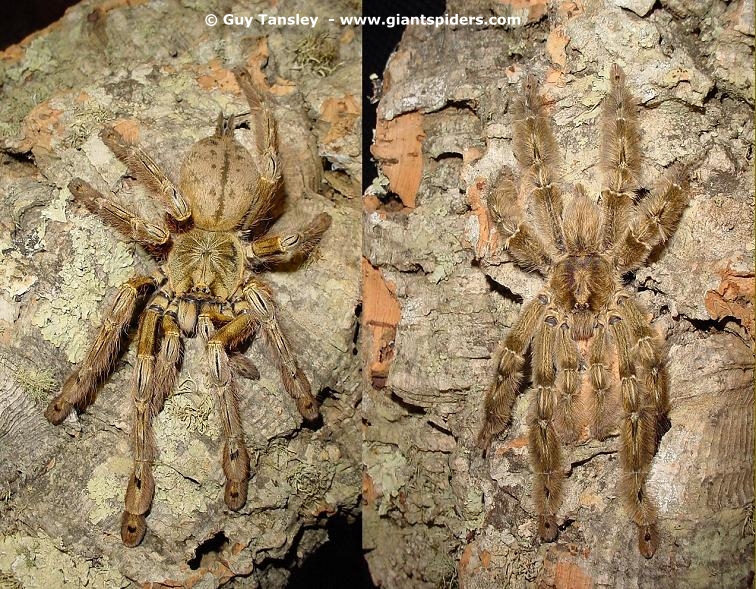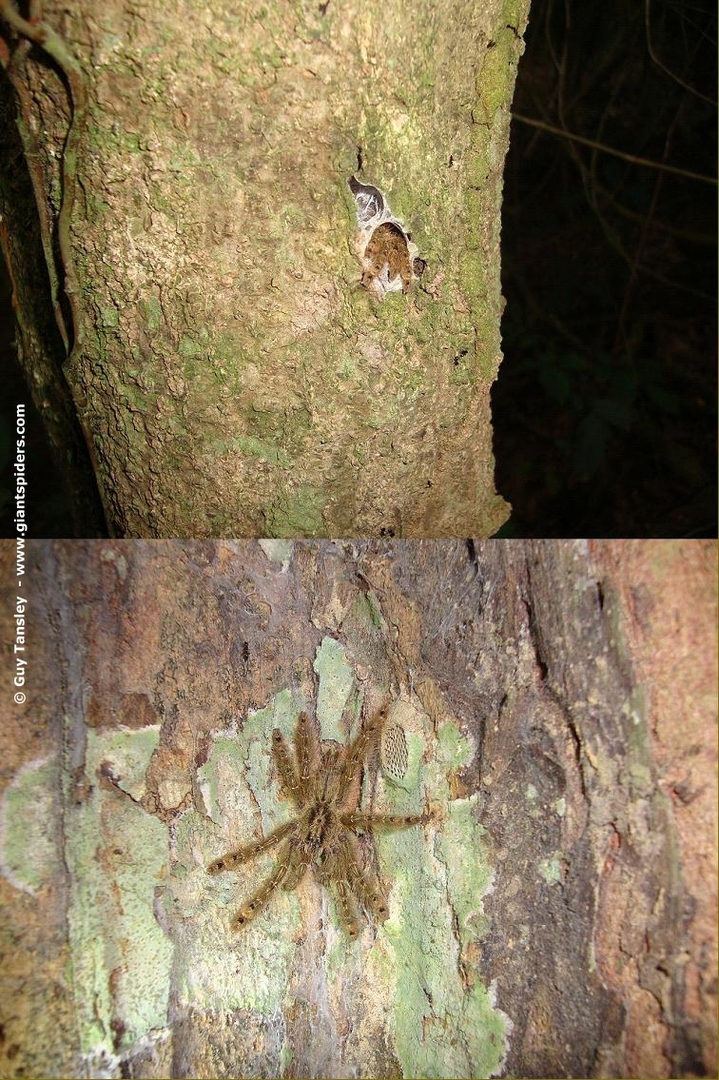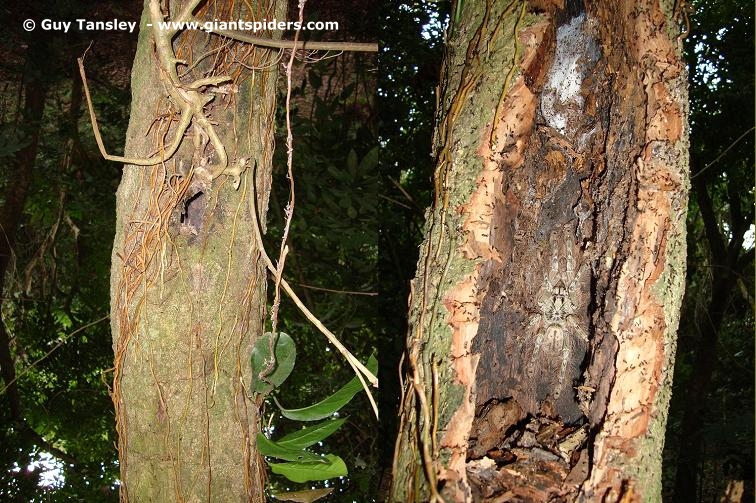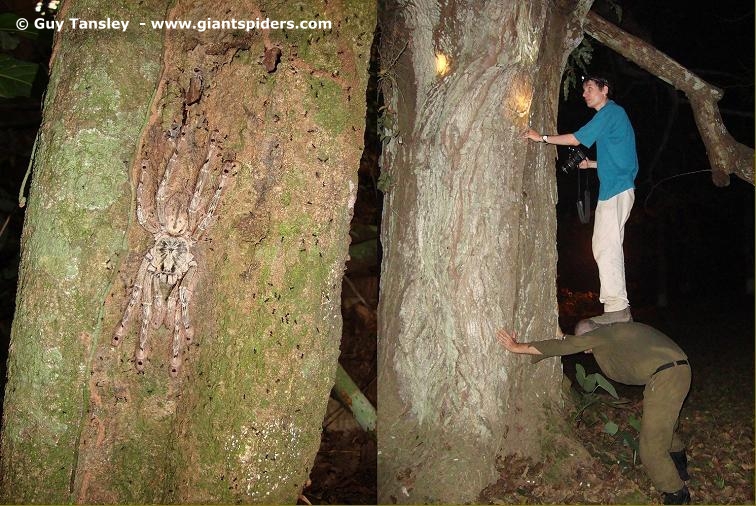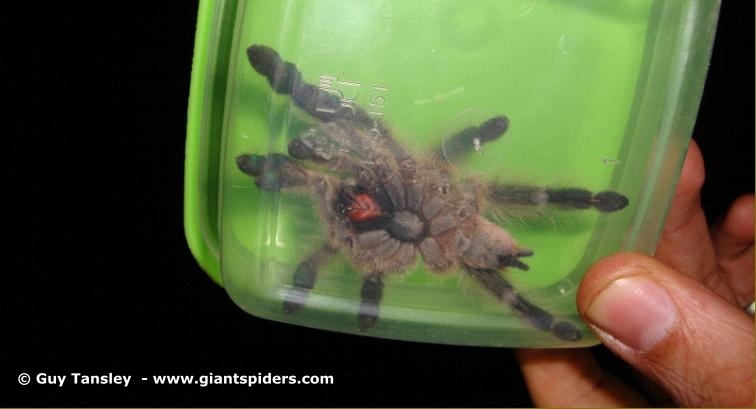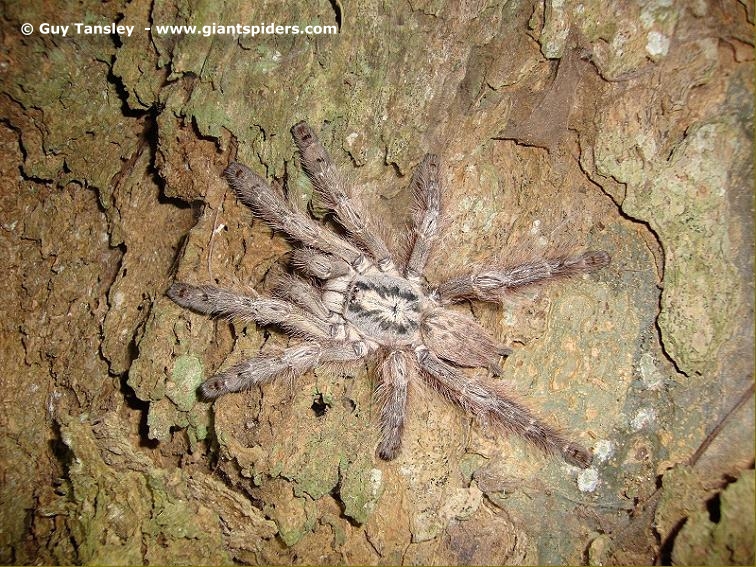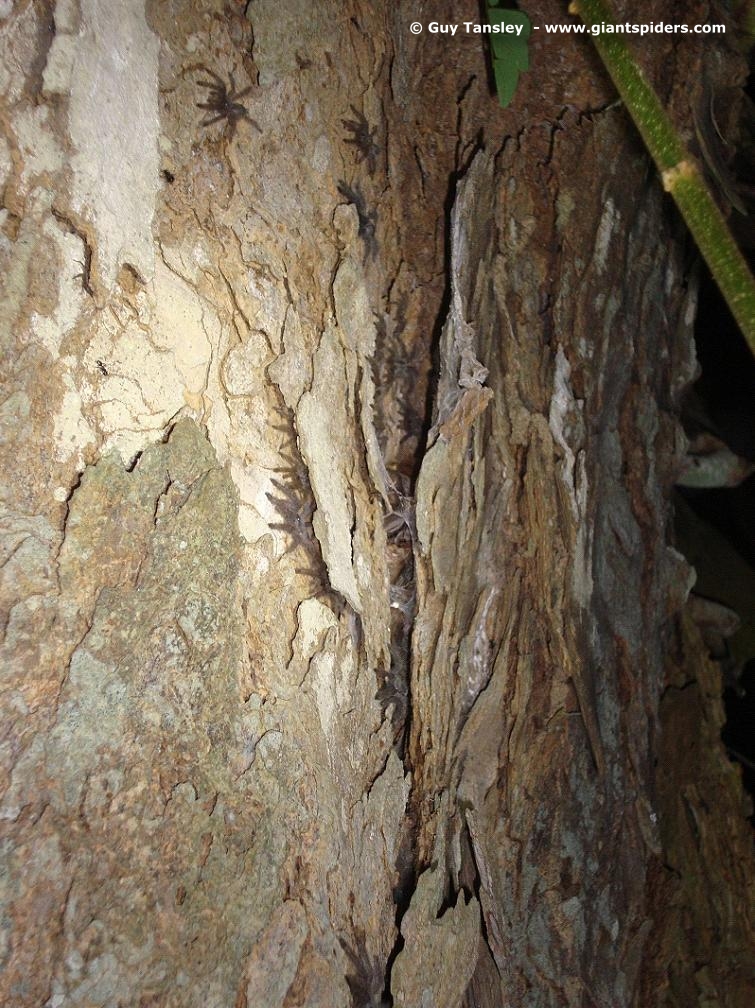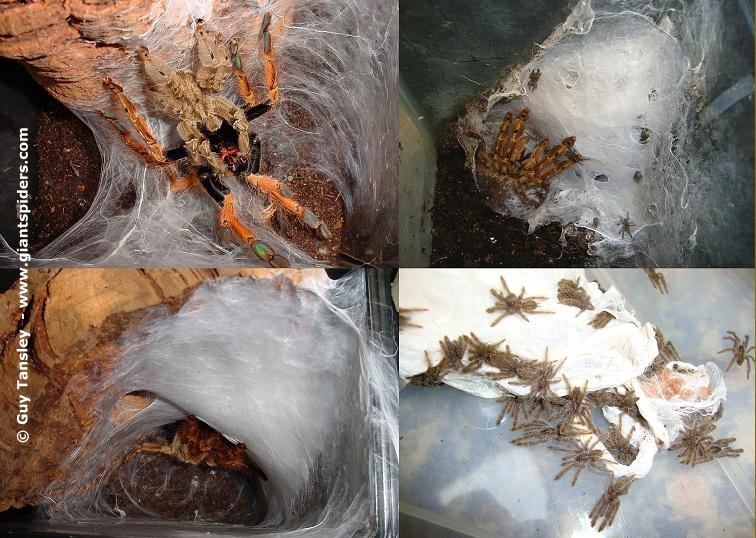
Stromatopelma calceatum & Heteroscodra maculata:
Ghana field observations and breeding notes
Guy Tansley
The feather-leg baboon
tarantula, Stromatopelma
calceatum (Fabricius, 1793) is a
stunning spider.
The overall colour is tawny yellow/brown with a subdued starburst pattern on the carapace and a symmetrically spotted and striped abdomen. The legs are covered with long setae, banded and spotted
with black similar to Poecilotheria markings. Females can reach a leg span of 15 cm. The males are somewhat smaller and more slender in comparison but have delicate, brush-like hairs on the legs giving the
species its common name. No tibial hooks are present but the male has a well developed scopulae brush on the metatarsus of the first pair of legs. During mating this is used to wedge between the
females chelicerae and palps to both support her weight and give him some degree of protection (see here for more info). Females can live
in excess of ten years and although relatively easy to maintain in captivity, captive breeding has become less common in recent years. A typical arboreal set-up is ideal using a substrate of moist
compost and slabs of cork bark for the spider to build its retreat. A defensive species that most definitely shouldn't be handled!
Female (left) and adult male S. calceatum
My first attempt at breeding S. calceatum during 2002 met
with disappointment as the egg sac was destroyed by mites and unfortunately followed shortly after by the death of the old and very large female. I kept several specimens over the following years but
for some reason, I never attempted further breedings.
Years later in 2009 my interest in the species was rekindled when I was asked to join a field trip to Ghana (with Andrew Smith, Paul and Mark Carpenter and Richard Gallon) and among the target
species for the trip was Heteroscodra
maculata and S. calceatum so I jumped at the
chance of seeing both these beautiful species in their natural habitat.
Our 3 week trip took us across Ghana and for the most part, we were unsuccessful in our attempts to locate specimens. Information was non-existent for locating this species in Ghana but what was
availablefocused on nearby Togo and told us that the spiders could be found high up in the base of
palm fronds that so commonly populate the hillsides so we focused our attention there initially. After days of frustrating searching (the locals confirmed
that S. calceatum were in the area) we concentrated on the small patches of remnant forest that still existed between the plantations and with a sense of relief
all round, we located our first specimens. Small juveniles were found sitting awaiting passing prey with forelegs protruding on several trees which made great photographs but it was Paul that
discovered the jewel in the crown that day.
Juvenile S. calceatum out hunting at night
Inspecting a somewhat small hole in a half cut down tree, we were pleased to see the characteristic tarsus spots of an adult female within. Closer inspection with the endoscope revealed not only an impressive spider but she was also sitting on an egg sac! Now I'd read stories of females flying fang-first out of trees when disturbed so it was a relief to watch the female move relatively calmly out of her retreat after Paul carefully opened up the entrance (maybe this was due to her reluctance to flee as she was sitting on an egg sac?).
The retreat of an adult female S. calceatum before and after extraction © Guy Tansley
Coaxing the spider around the tree for the
perfect photographing position proved relatively easy and we clicked away until the light began to fade and the ants defending the tree became intolerable. The spider was promptly returned to her
retreat and egg sac and the hole patched up hopefully without too much disturbance (no specimens were collected on this trip).
After this initial find, we spent the following week or so searching without success all but for the last day's location. Again we found juveniles in tree holes around 2-3 meters from the ground and
spotted an adult female higher up sitting behind loose bark, frustratingly just out of reach for photographing though we nevertheless tried!
Adult female S. calceatum (left). Richard standing on Andy's back trying to get a good photograph!
It was at this site that we made our next discovery. Lots of juveniles and sub-adult spiders were seen inhabiting these trees, all surmised to be S. calceatum and we spent the evening recording the relevant data and taking hundreds of photographs but then one specimen in particular caught our attention. We secured it in a clear plastic box and on inspection of the spiders underside, Richard confirmed that we had found a small adult female of our second target species, Heteroscodra maculata and a further search of the surrounding trees also revealed lots of H. maculata spiderlings tucked behind the loose bark!
Small adult female of H. maculata
Adult female of H. maculata
H. maculata spiderlings found behind loose bark
We left Ghana satisfied with our findings and photos but
my urge to try and breed S. calceatum successfully was rekindled so a sub-adult female was secured soon after returning home. Around 18 months later the female was large enough to breed and luckily Richard had
a mature male ready to go.
The mating timeline was as follows:
09/2010: Female moulted.
18/01/11: Mated with Richard's male. Female was receptive and drummed in response to males courtship. Several insertions were made before the male escaped without any aggression from the
female.
01/03/11: Female sealed herself into her cork bark retreat. Thick silk laid down against the sides of her tank.
08/03/11: Discovered with fixed egg sac.
03/05/11: Found with fully fledged spiderlings.
16/05/11: Spiderlings separated, 346 in total.
S. calceatum mating, egg sac production and resulting spiderlings
This article first appeared in the Journal of the British Tarantula Society, 27 (1): 8-11 (2011).
